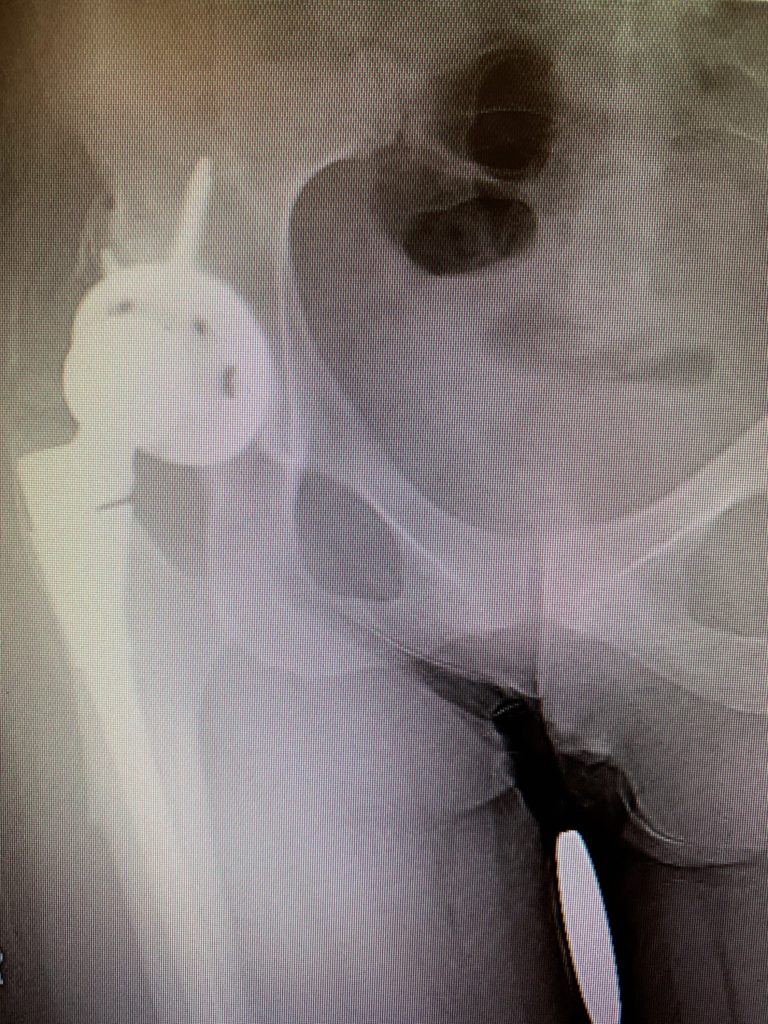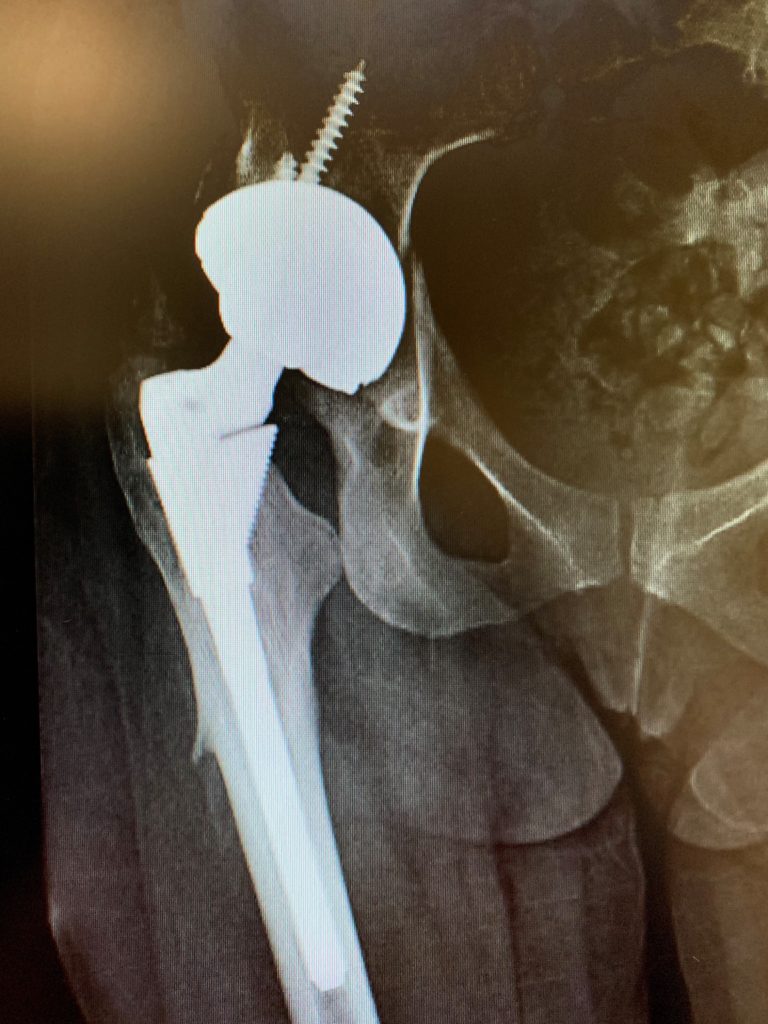Case Study: Hip dislocation treatment – Acetabular component exchange in total hip replacement
Miss EM is a 35 year-old female who, unfortunately, developed arthritis at a very young age. She very quickly exhausted the non-surgical modalities of managing hip arthritis at ultimately received a right Total Hip Arthroplasty at the age of 32.
She recovered uneventfully, but 6 months post-operatively she experienced a dislocation of her right hip which was initially managed with a closed reduction and monitoring for recurrences. She went on to experience 2 further dislocations within the following year, all of which were relatively low-energy in nature.
She returned to clinic after each of these for follow-up and, after numerous discussions regarding her ongoing hip instability, the decision was made to offer her a revision surgery to address this. Her medical history included anxiety, hypertension, hypercholesterolaemia and fibromyalgia. She takes medications for all of the aforementioned, but has no known drug allergies.
She is a non-smoker. We performed the revision surgery through a lateral approach – the approach used for her initial hip replacement. We exposed her artificial hip fully, and removed her acetabular component only.
Our plan was to exchange this component for an alternative that facilitated a dual-mobility construct – one that has proven to address the problem of instability very well.
This was done without event and, on extensive stability testing, no dislocations were observed. Post-operatively, Miss EM underwent extensive physiotherapy to strengthen her abductors as much as possible – another strategy to address her problem of instability. 1 year post-op, she does still complain of stiffness in her hip, but has not experienced any further dislocations.
Pre-op

Post-op

